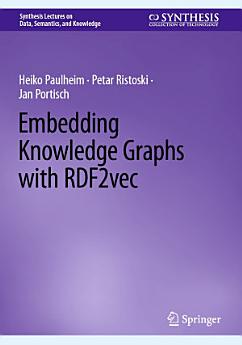Embedding Knowledge Graphs with RDF2vec
About this ebook
About the author
Heiko Paulheim is a computer scientist and a full professor for Data Science at the University of Mannheim. His group conducts various projects around knowledge graphs, yielding, among others, the public knowledge graphs WebIsALOD, CaLiGraph, and DBkWik. Moreover, his group is concerned with using knowledge graphs in machine learning, which has lead to the development of the widespread RDF2vec method for knowledge graph embeddings. In the recent past, Heiko Paulheim also leads projects which are concerned with ethical, societal, and legal aspects of AI, including KareKoKI, which deals with the impact of price-setting AIs on antitrust legislation, and the ReNewRS project on ethical news recommenders.
Petar Ristoski is an applied researcher at eBay in San Jose, CA.
Jan Portisch is a PhD student at the University of Mannheim in cooperation with SAP SE - Business Technology Platform - One Domain Model.




